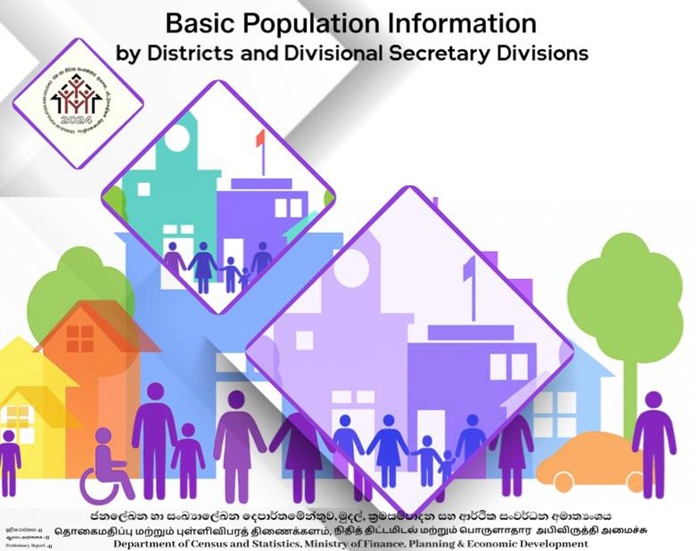
The 2024 Census of Population and Housing reports that Sri Lanka’s population is 21.7 million, with 51.7% females and 48.3% males.
According to the Department of Census & Statistics, the census conducted in 2024 was the 15th Census of Population and Housing in the national census series, and was carried out from 07th October 2024 to the second week of February 2025.
In this census, the total population of Sri Lanka was reported as 21,781,800, of which 51.7 per cent were females and 48.3 per cent were males. In the urban sector, 51.9 per cent of the population is female, while 48.1 per cent is male. In the rural and estate rural sectors, the percentages of females are 51.7 per cent and 51.4 per cent, and the percentages of males are 48.3 per cent and 48.6 per cent, respectively. In the estate urban sector, the percentages of females and males are reported as 50.4 per cent and 49.6 per cent, respectively.
The sex ratio in Sri Lanka is 93.3. All districts show a sex ratio below 100. The highest sex ratio is reported from Monaragala district (97.9), while the lowest sex ratio in the country is recorded in Batticaloa district (88.0).
The population under 15 years of age in the country decreased by 4.5 percentage units, from 25.2 per cent to 20.7 per cent, during the census period from 2012 to 2024. Further, the population aged 65 and above increased from 7.9 per cent to 12.6 per cent, and shows an increase of 4.7 percentage points during this period.
In 2024, the population aged 15-64 accounted for 66.7 per cent of the total population, compared to 66.9 per cent in 2012. Accordingly, the percentage of the population aged 15–64 showed a decrease of 0.2 percentage points during the census period from 2012 to 2024
The population under the age of fifteen and those aged sixty-five and above are considered dependents. The dependency ratio, which was calculated as 49.4 per cent according to the 2012 census, has increased to 49.8 per cent in 2024. The highest dependency ratio is reported in the Matara district of the Southern Province (55.0 per cent), while the lowest dependency ratio is reported in the Colombo district of the Western Province (43.0 per cent).
The total migrant population reported in the census was 3,167,263. Among the migrant population, 40.6 per cent had migrated primarily due to marriage.
Full report: https://www.statistics.gov.lk//Resource/en/Population/CPH_2024/Population_Preliminary_Report.pdf (Newswire)
